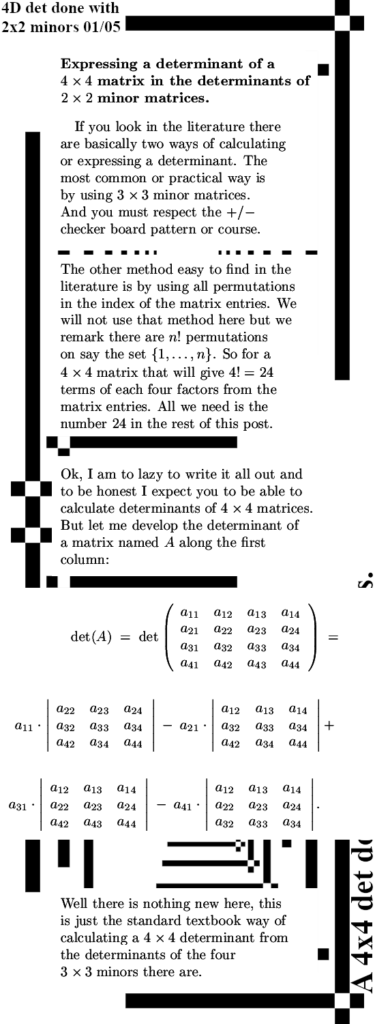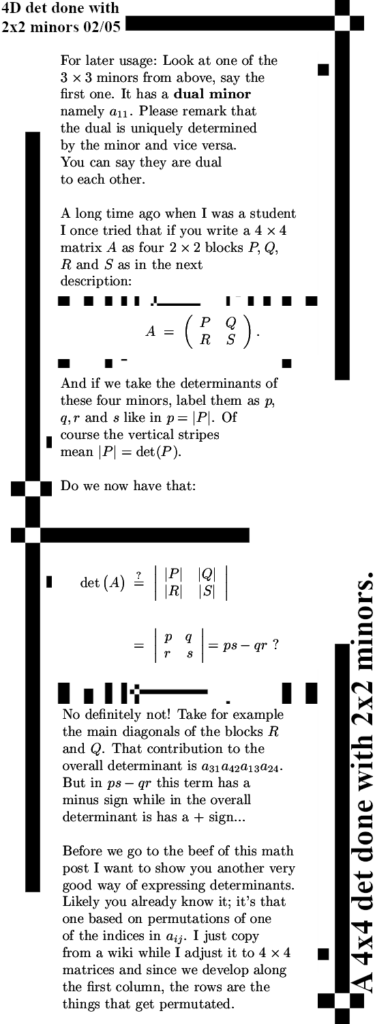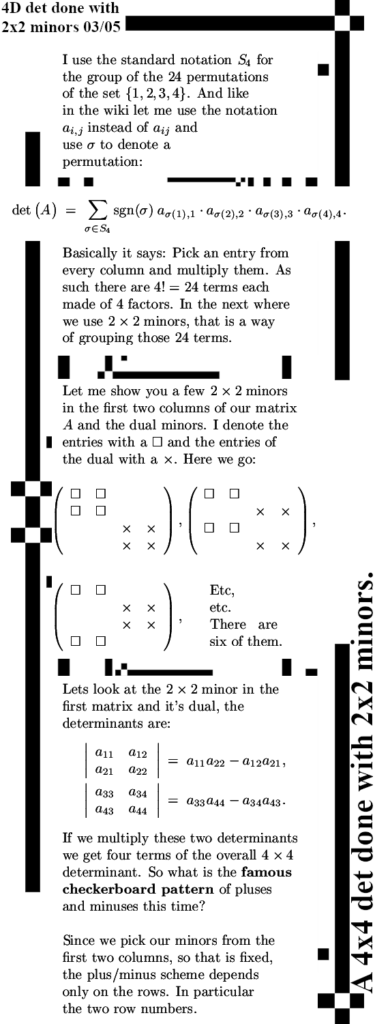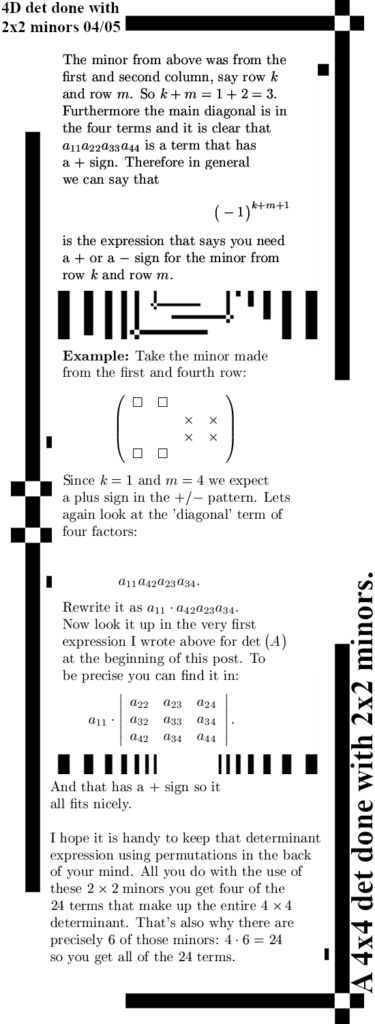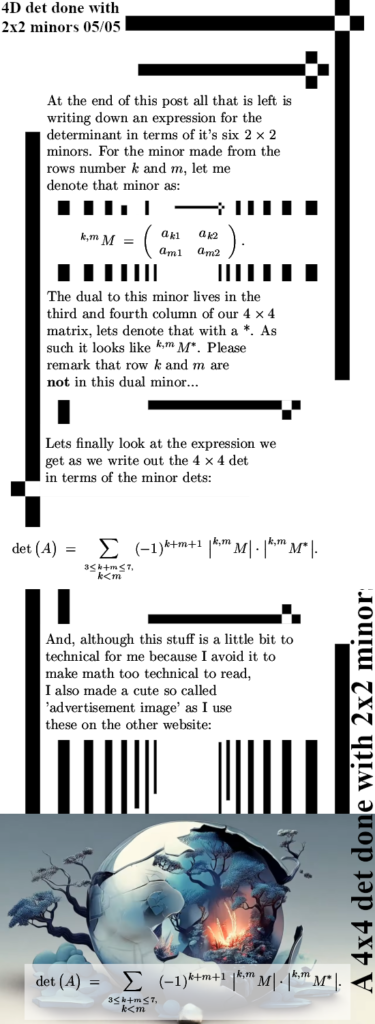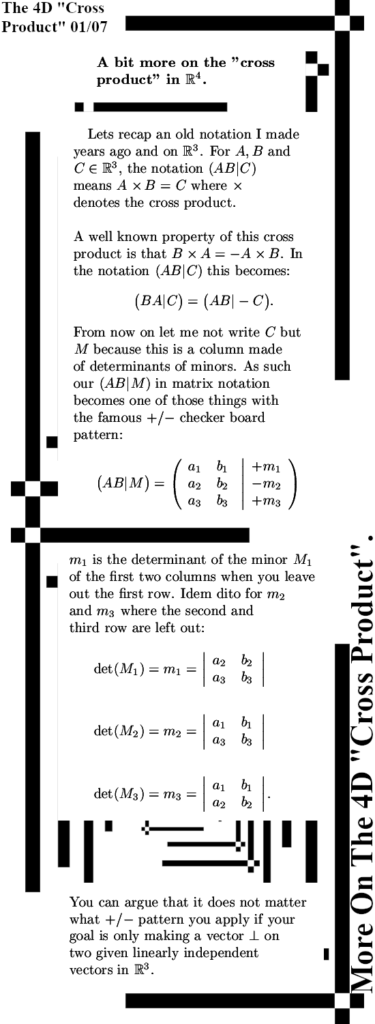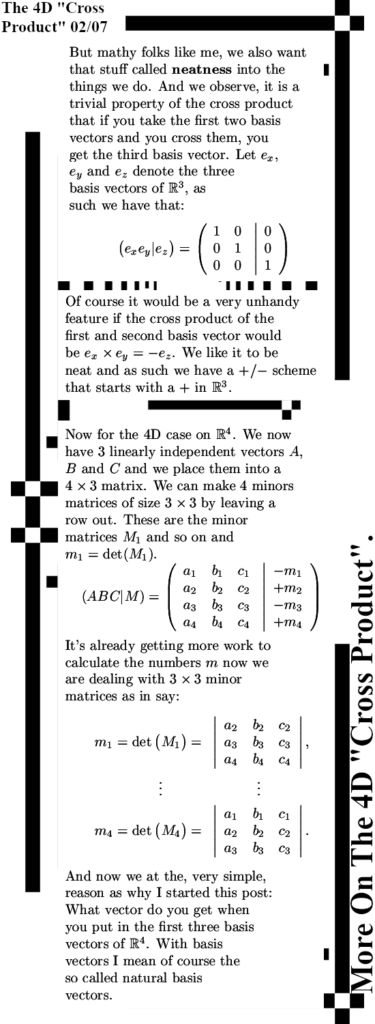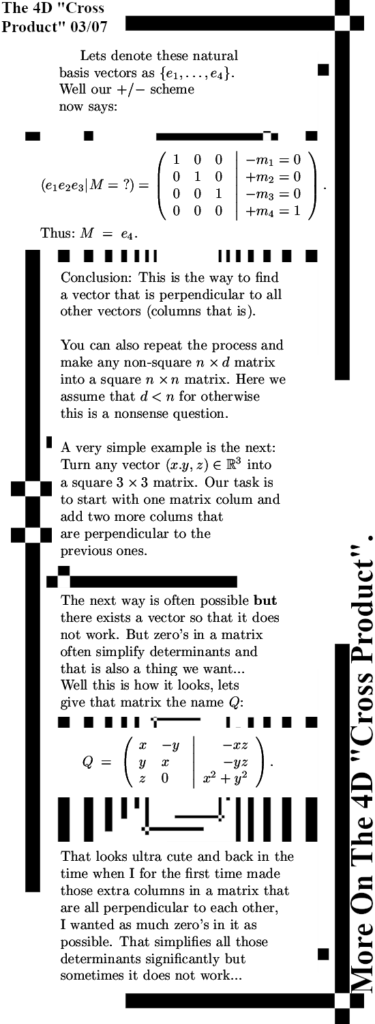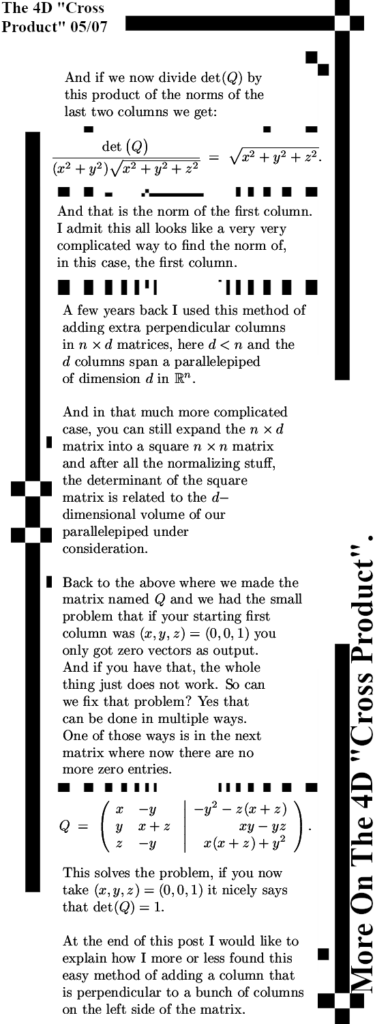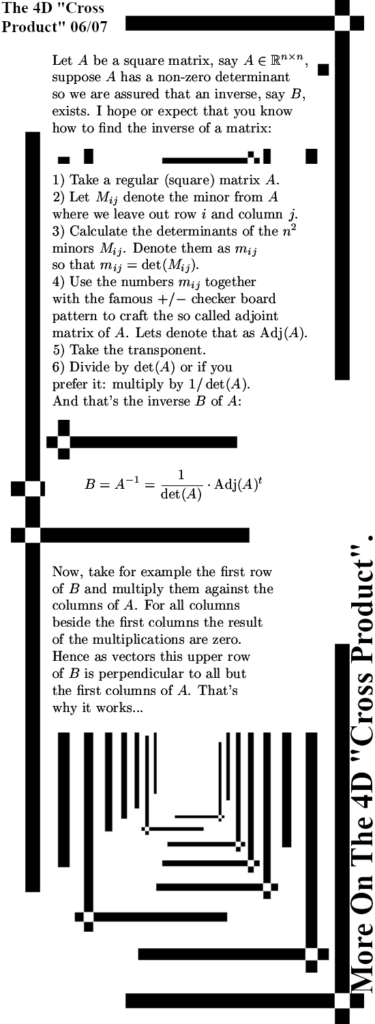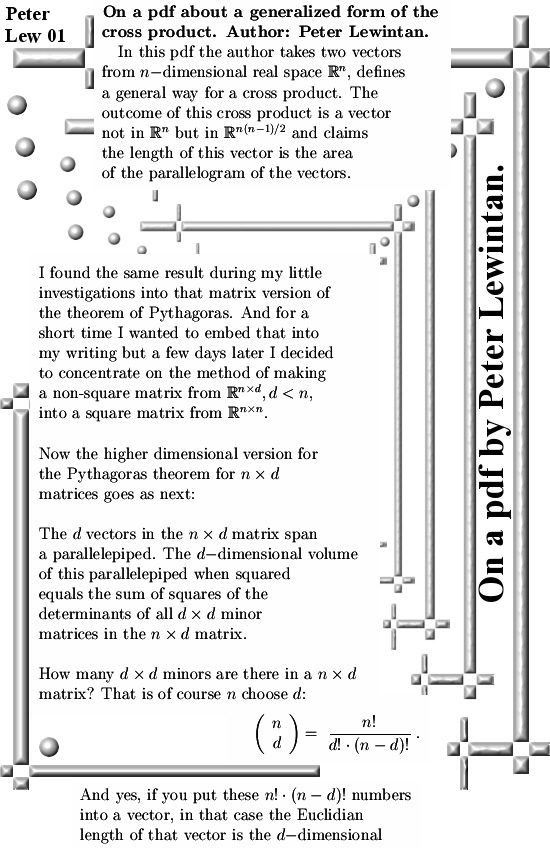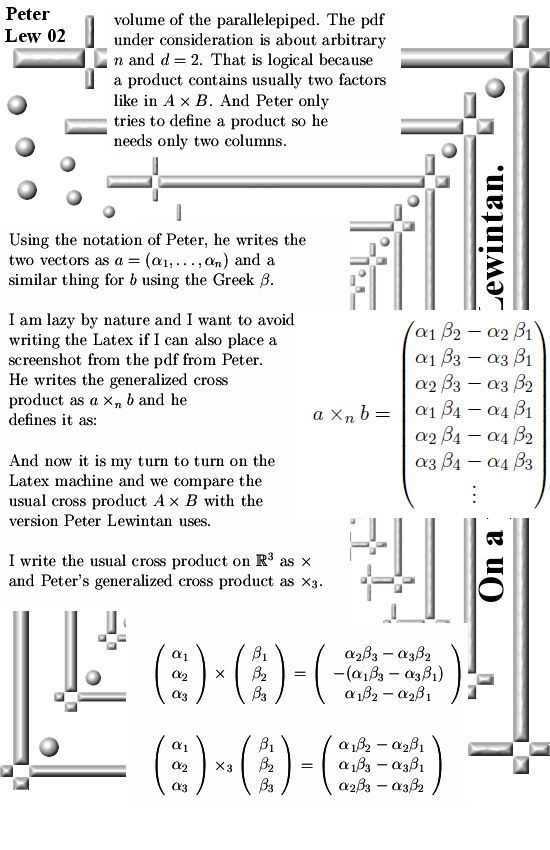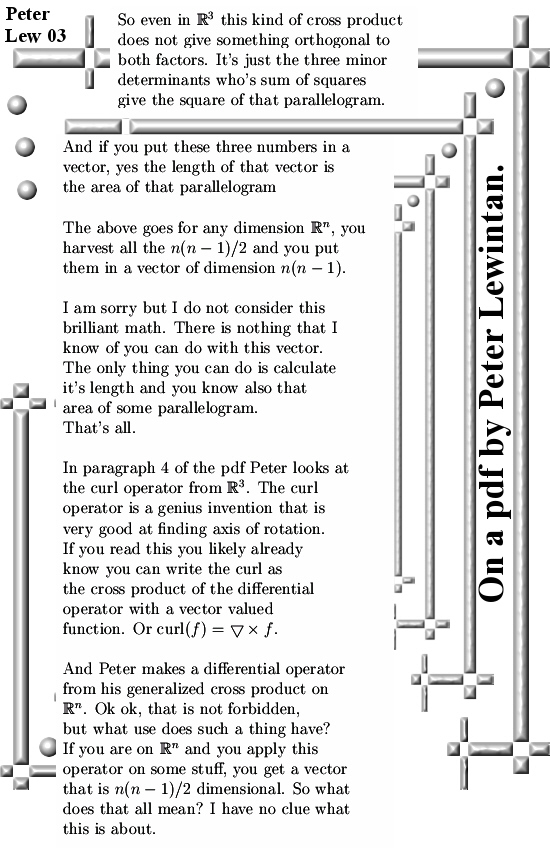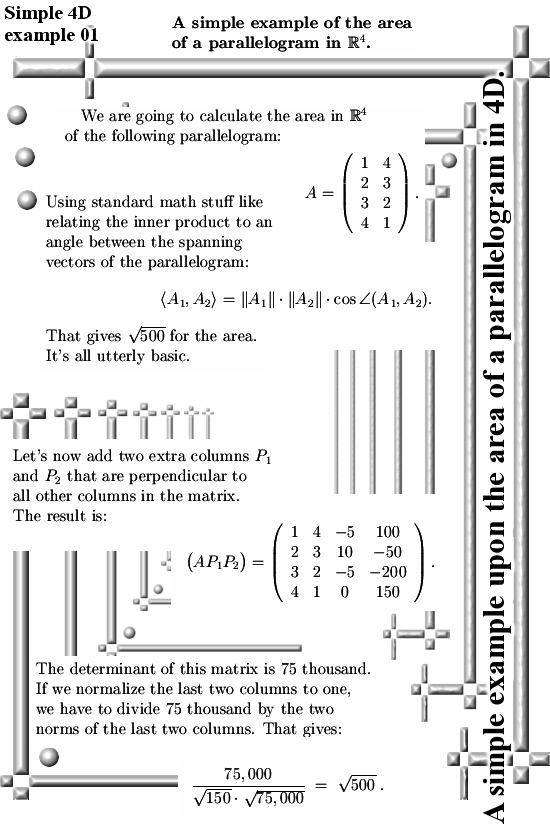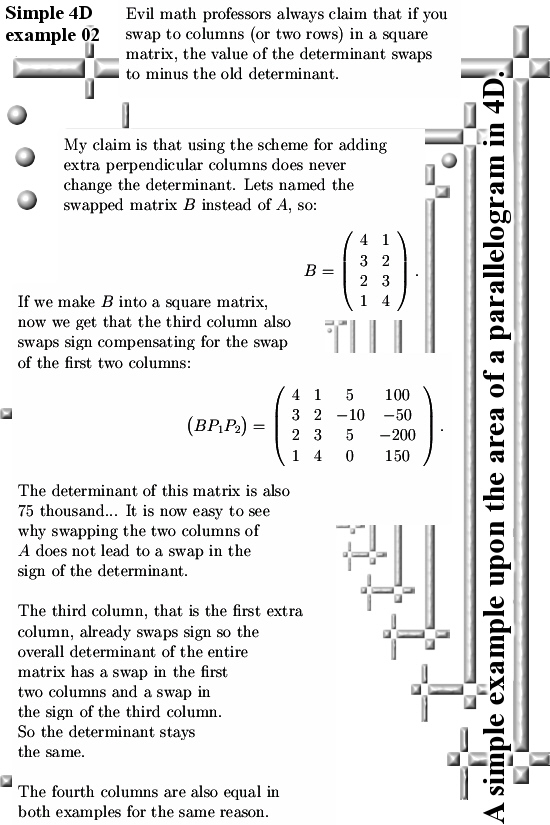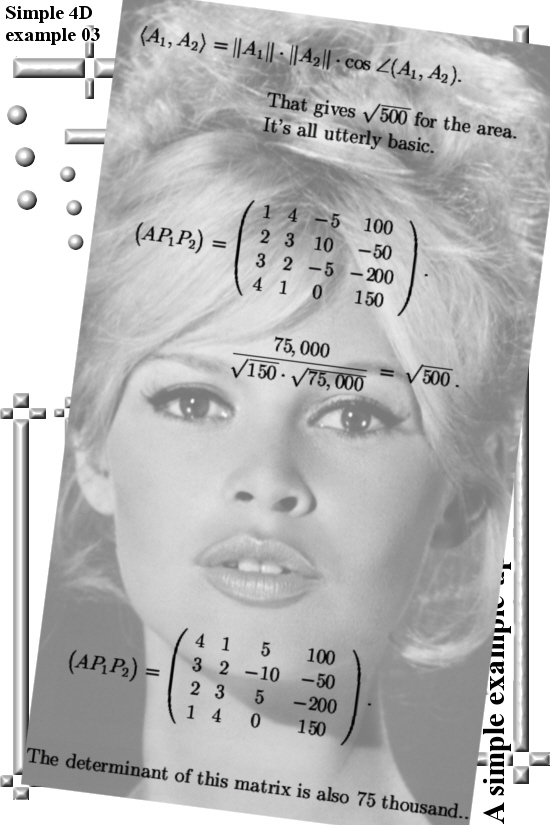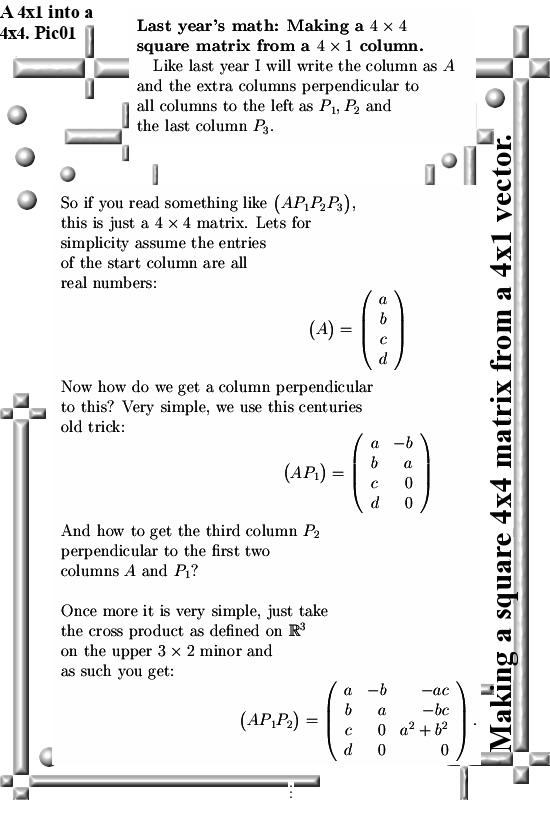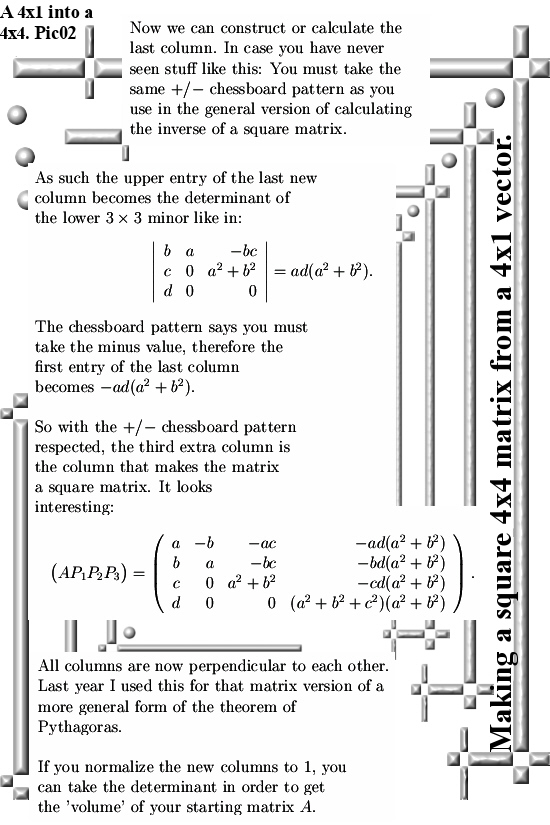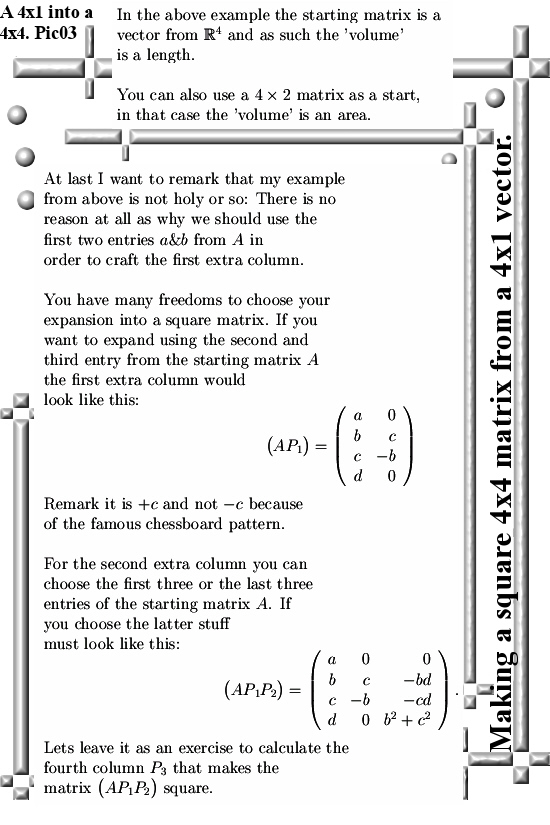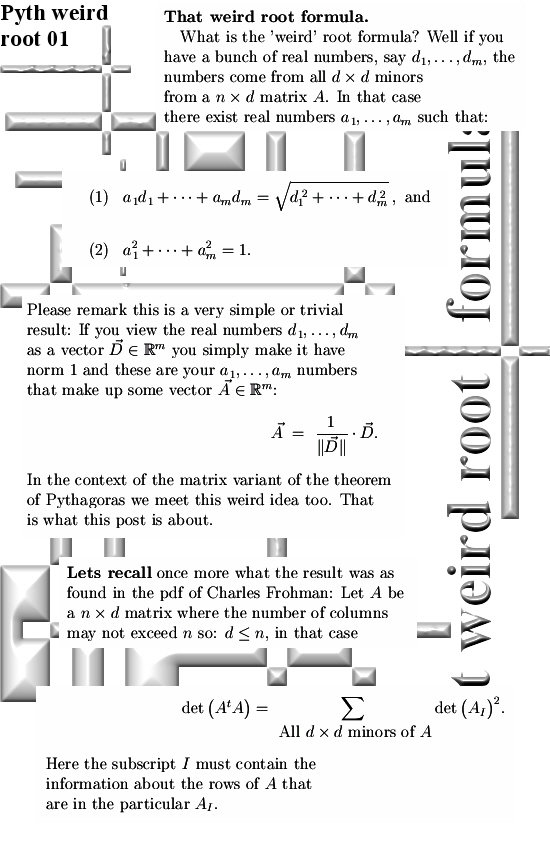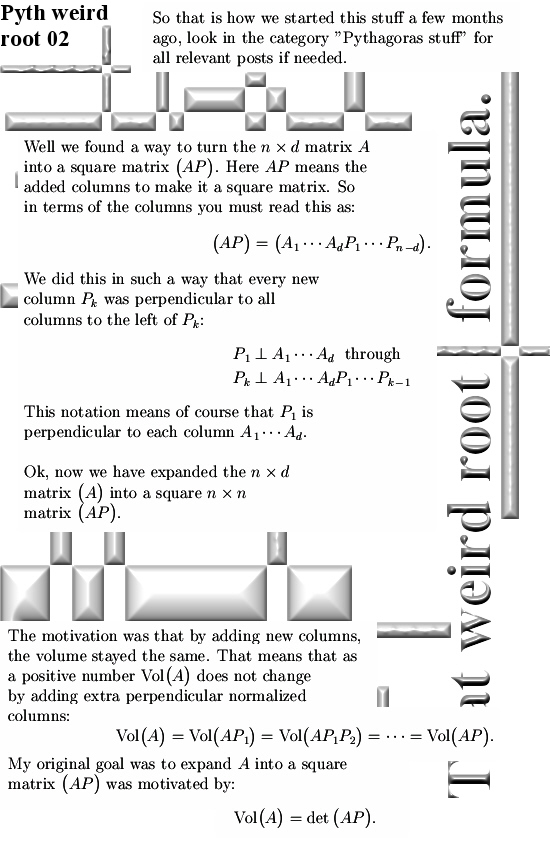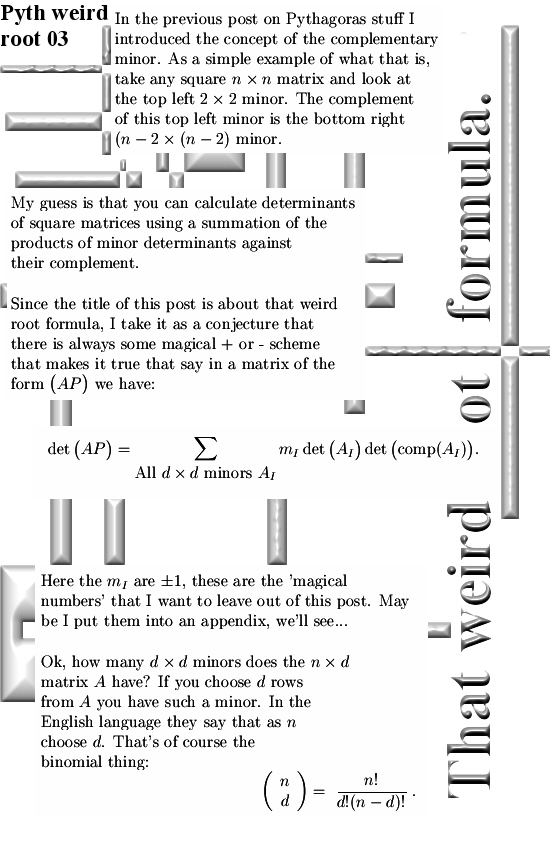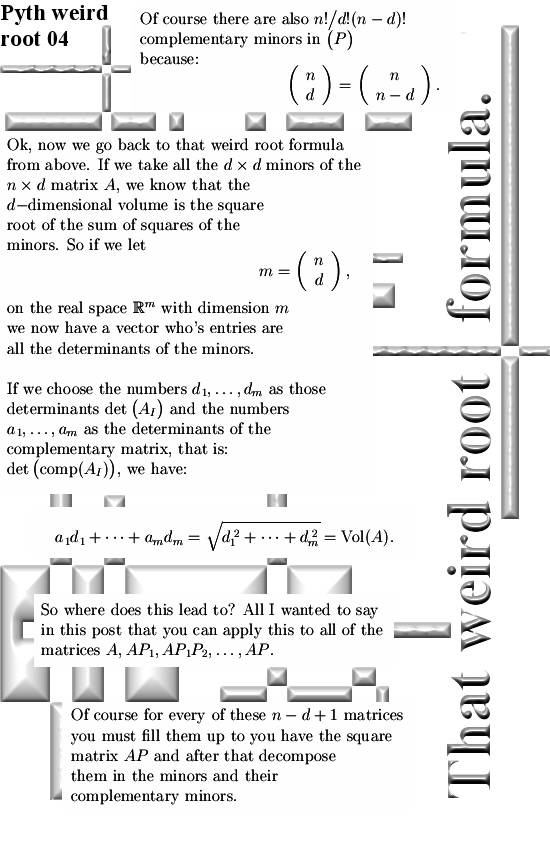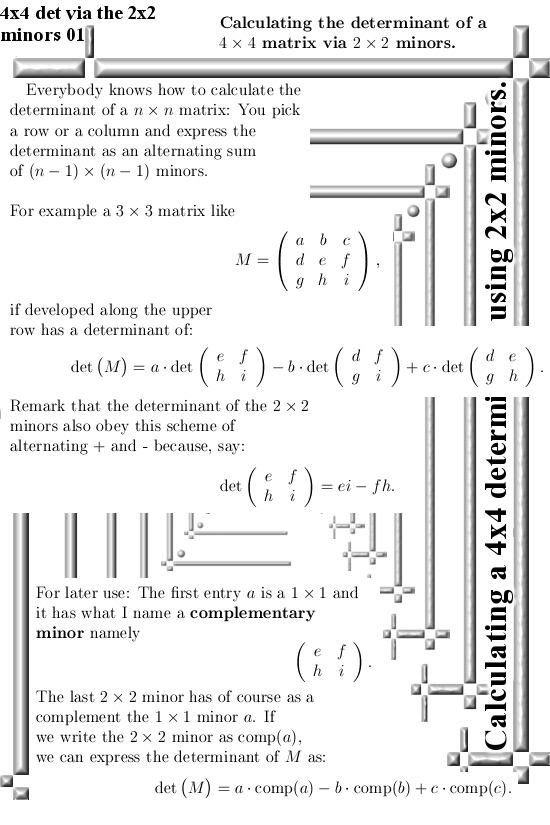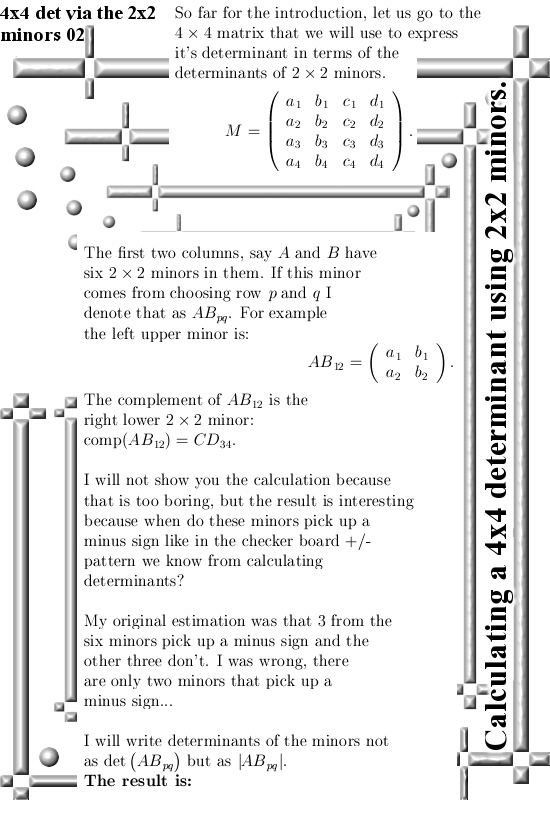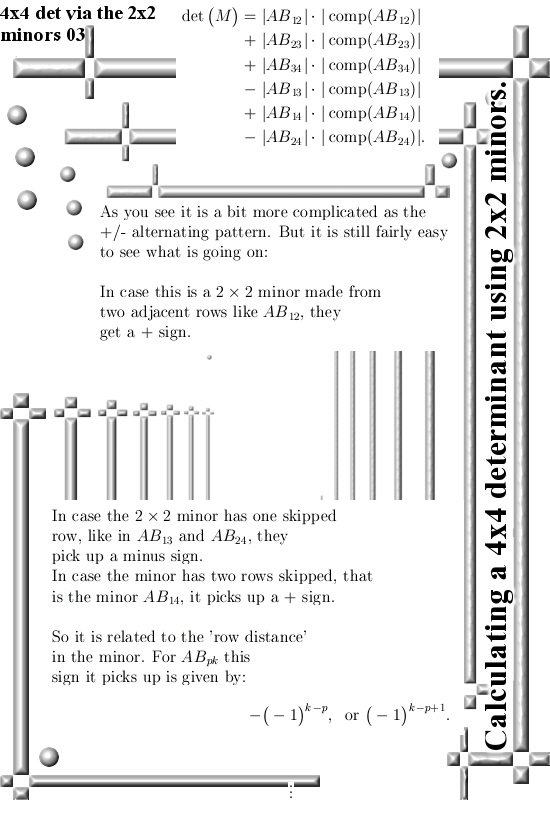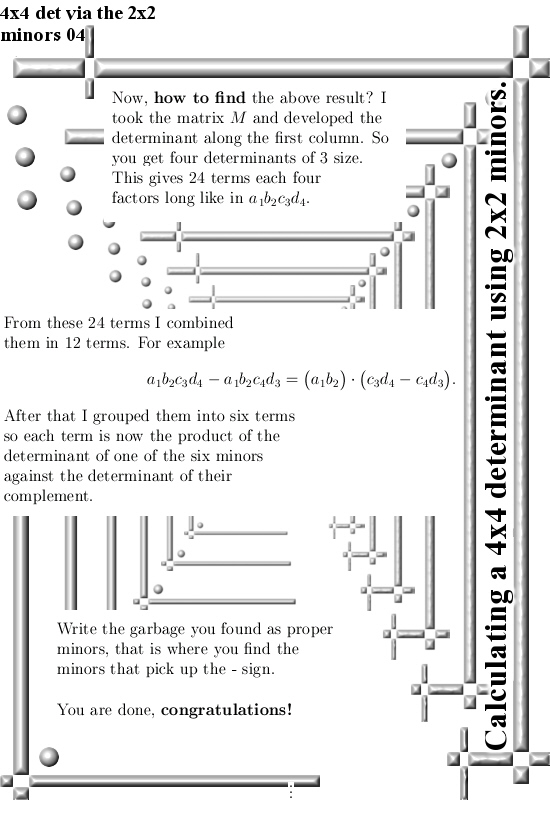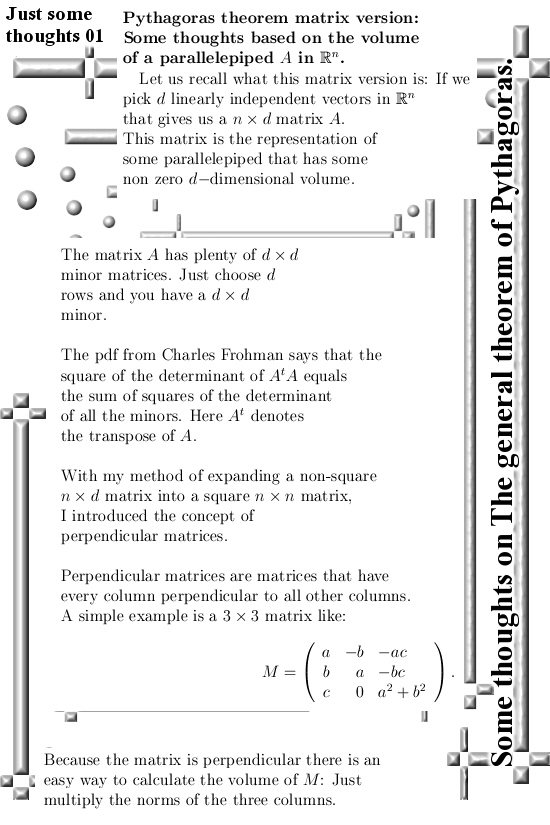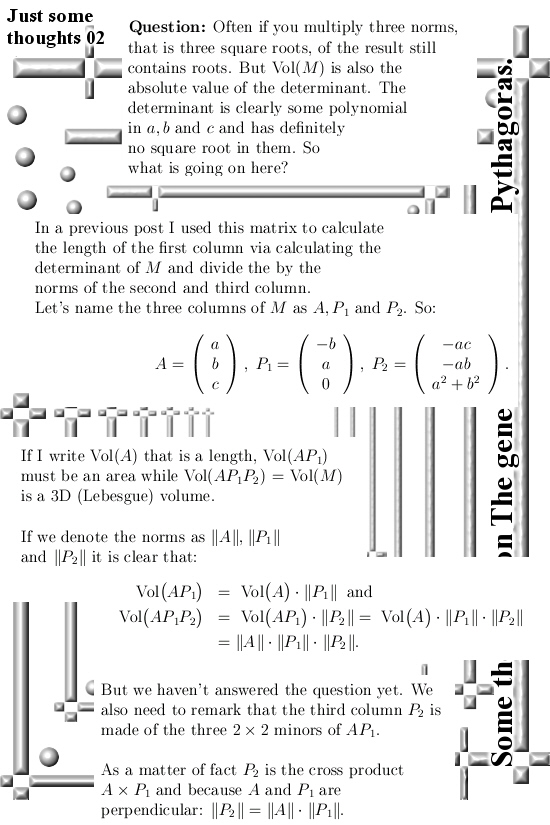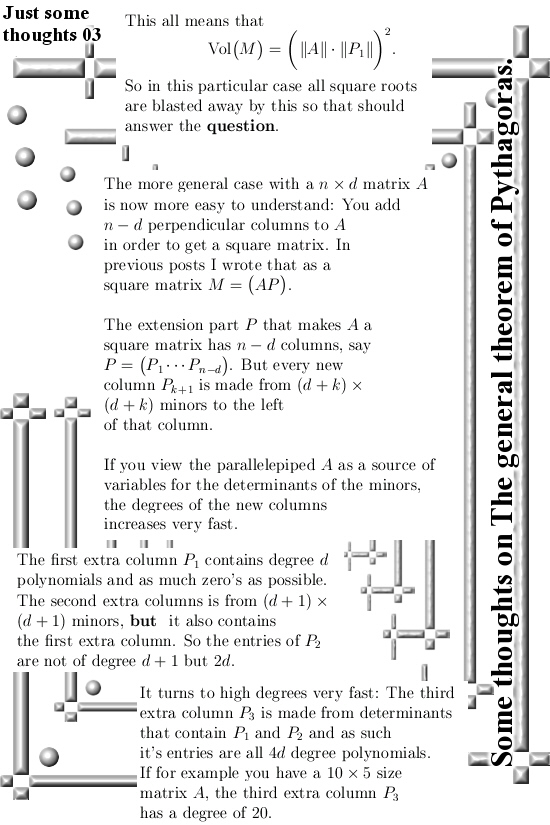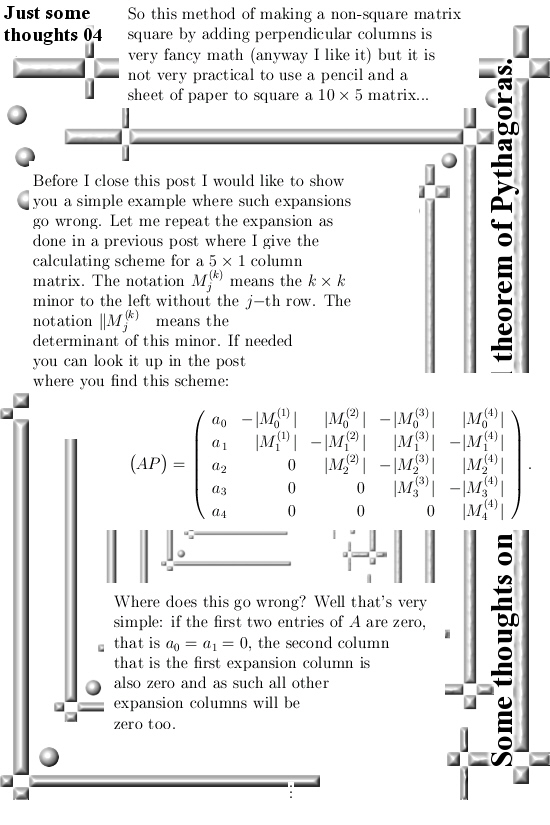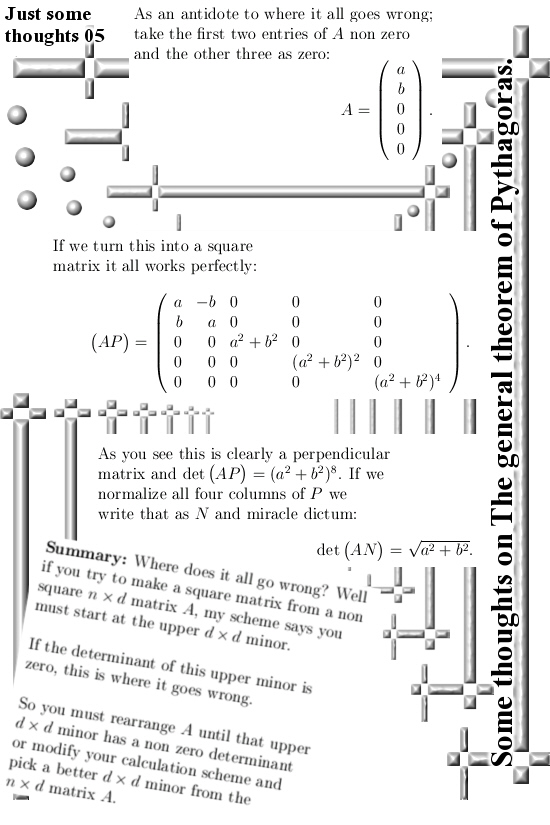In this post we work mostly on the 4D real space only and I just show you a bunch of example as how to construct a normal vector to a given set of independent 4D vectors. So I start with just a 4D vector and construct a so called full normal vector to it. For readers who follow this website longer, yes I borrowed this title from the title of the pdf on the matrix version of the theorem of Pythagoras. That was something like the Full Theorem of Pythagoras written by Charles Frohman.
The first two examples are finding a normal vector in 2D and 3D real space and that is not very hard of course. Than the 2D and 3D results are used for all the 4D vectors of the rest of the post. Anyway the first serious example is just a 1D vector and of course in a 4D real space there is a 3D space perpendicular to each non-zero 1D vector. So it is not a unique vector in the sense like 3D where the cross product always returns a vector with a unique direction. But these full normal vectors are such that whatever the input is, it will always produce an outcome or a vector perpendicular to the given one(s).
After the 1D example the next example is two 4D vectors or as I always formulate it: The first two columns of a matrix. Because we have two columns in this example we can use the good old cross product and apply that on the 4 minor 3×2 matrices there are in these two columns. That gives the full normal vector in the case of two columns.
An implicit goal of this post is understanding a bit more about how determinants react on these original columns and the added extra ones. All added extra columns are perpendicular to all previous ones. So if we have that in a square matrix we can simply normalize all added extra columns to 1 and the determinant will nicely spit out the ‘volume’ of the thing we started with: A vector, a parallelogram or a 3D parallelapipid in our 4d real space.
This post is seven pictures long and if you understand all of it’s content you are now capable of always making a 4D vector into a square 4×4 matrix.
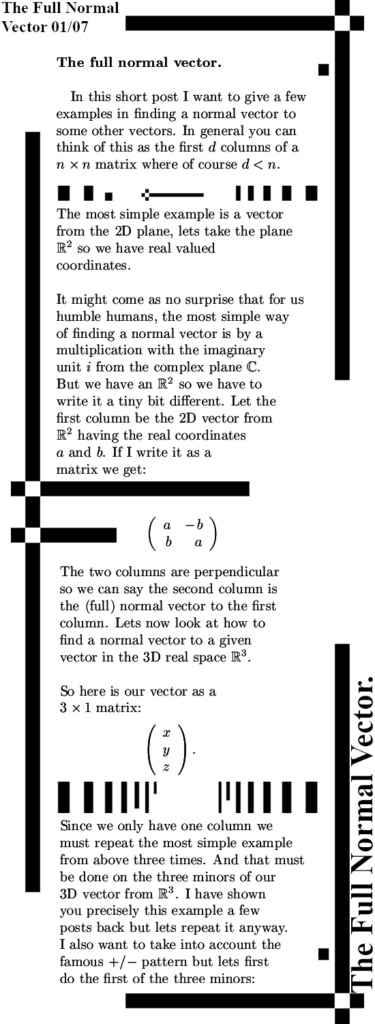
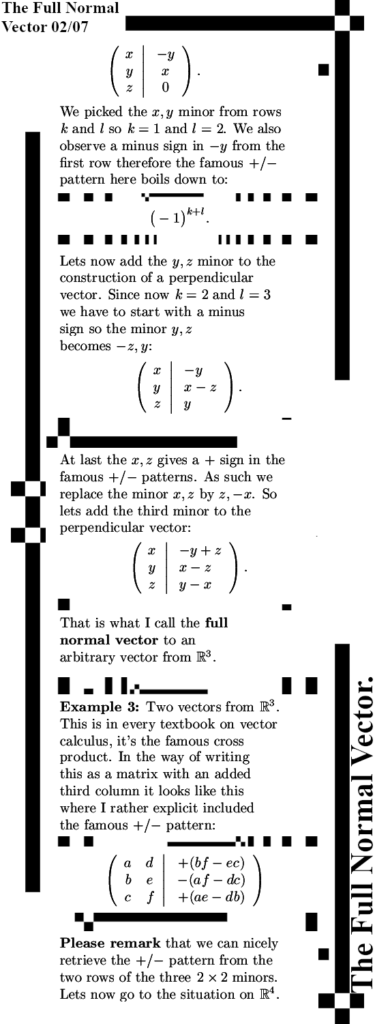
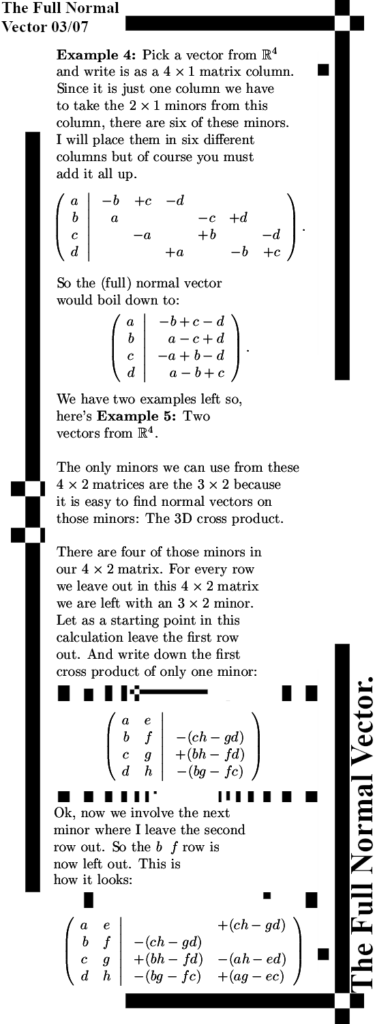
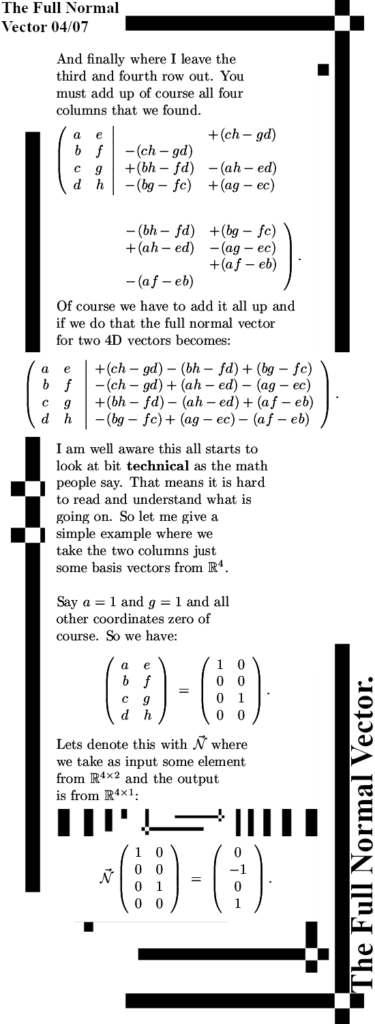
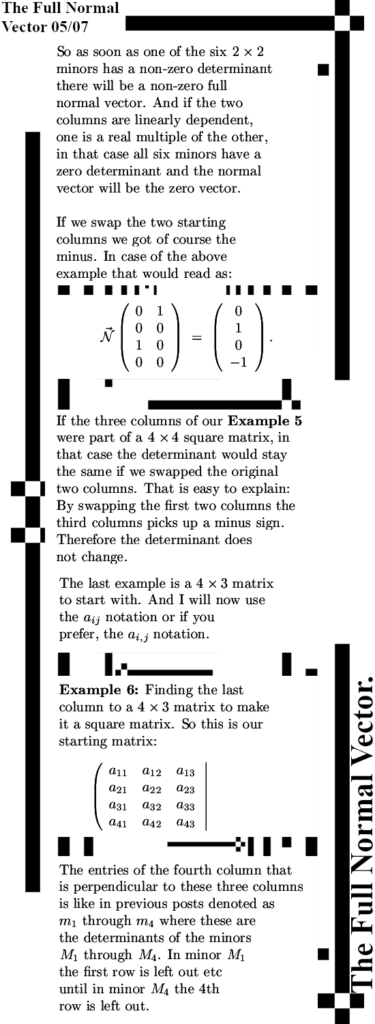
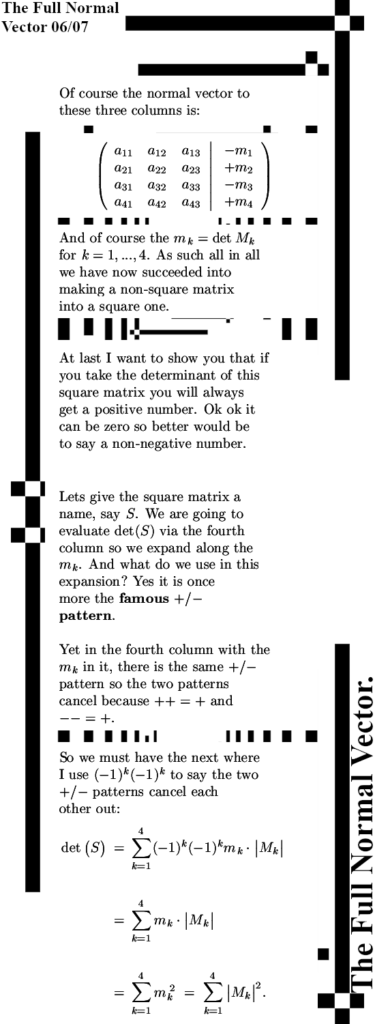

Ok, that was it for this post. In case you have never seen the Frohman pdf that all started this a few years back, here it is:
The Full Pythagorean Theorem.
